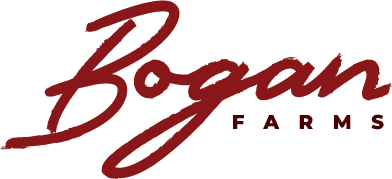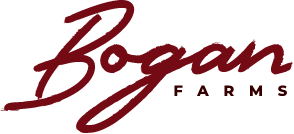RangeFree, ethically produced beef with a rich, buttery taste.
We love our Herefords and have inherited a herd bred for quality, docility, mothering ability and size.
Our challenge is to continue the family tradition of innovation. How do we raise the marbling and taste characteristics of our herd without compromising the key production traits we’ve nurtured for over 50 years? Moreover, how do we do this in an ethical way?
An obvious answer was to cross our Poll Herefords with Black Waygu and follow the Black Angus/Black Wagyu cross trend. However, for us this option is a hard NO. The caging of animals is an unpalatable option for our family. Further research found the little-known Japanese Red Wagyu breed (otherwise known as Akaushi or Akage Washu). And that’s when the idea of the Bogan Red was born.

Bogan Red is a Poll Hereford/Red Wagyu (Akaushi) cross that produces juicy, tender beef, with intense marbling and a delicious buttery flavour.
Available soon
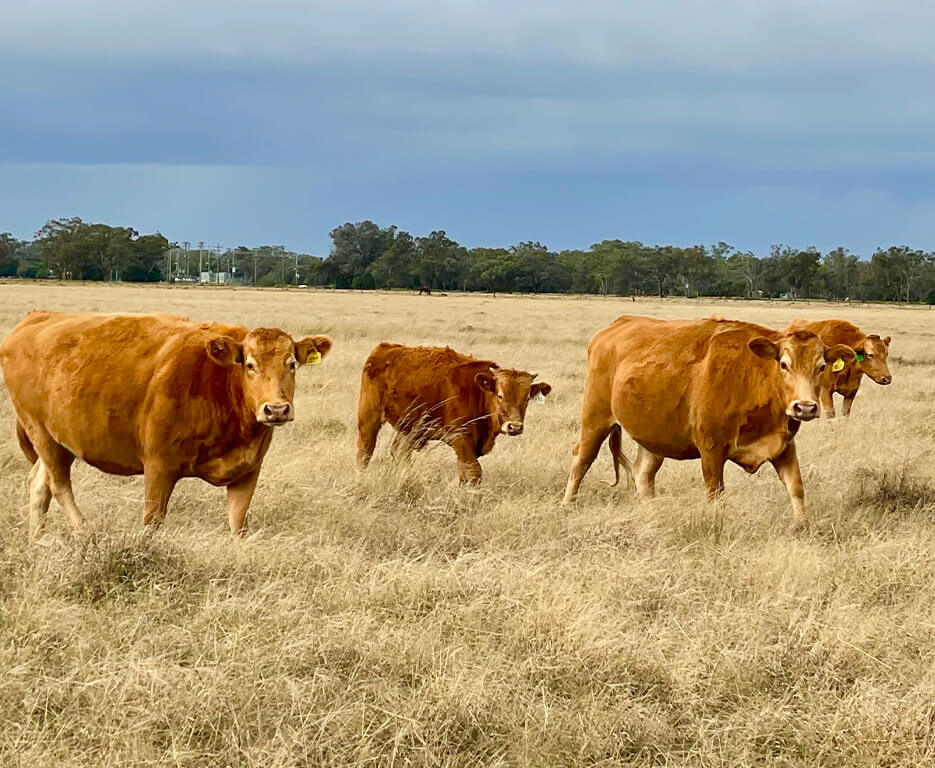
Red Wagyu (Akaushi/Akage Washu).
Japanese heritage.
The word Wagyu is an anglicisation of the Japanese word “wa-gyu”, which simply means our (Japanese produced) beef cattle. It doesn’t refer to any single breed. Prior to the Meiji Restoration of 1868, Japanese cattle were predominately bred as working animals – not dissimilar to the Bullock teams our great grandfather drove through the NSW Riverina around the same time!
Red Waygu or Akaushi/Akage Washu is a separate breed from other Japanese cattle. There are no similarities, genetically or phenotypically, between Akaushi and the other Japanese breeds. The Akaushi Breed started with the South Korean breed known as Hanwoo. In 1870 Devon was infused into the Hanwoo cattle and around 1910 Simmental was incorporated into the breed. Around 1910 the breed was closed to any other outside genetics and the Akaushi breed was formed. To this day Akaushi remains the same – a closed herd for well over 100 years.
Changing a Nation’s Diet.
There was only one original ‘breed’ of cattle in Japan and it could trace its genetics back some 3500 years. The Japanese were not meat eaters, mainly due to religious beliefs. Emperor Meiji, however, was keen on changing all that as part of his drive to “westernise” Japan. In 1872 he decided to lead by example, and publicly dined on meat.
That meal pretty much opened the floodgates for Japanese beef.
Approving Japanese Breeds.
Imports of European breeds quickly followed and the next 40 years saw a massive cross-breeding programme. Eventually the Government stepped in and decreed that only four major ‘breeds’ should be recognized. Any crossbreeding was outlawed. The four approved breeds, which endure to this day, are: – Kuroge (Black), Akaushi/Akage (Red/Brown), Nihon Tankaku (Shorthorn) and Mukaku (Polled).
Kuroge or Black Wagyu forms the majority of the herds in Japan and across the world. It’s the animal of choice for high marbling but requires feed lotting for at least a year to achieve that standard.
The genetics of our Red Wagyu.
In 1994, Dr. Al Wood and Marie Wood, imported nine Red Wagyu females and three Red Wagyu bulls from Japan to the United States. Our Red Wagyus derive from this herd.
Hereford.
Herefords, unsurprisingly come from Herefordshire in the West Midlands and are one of the first cattle breeds in the world to be systematically line bred for commercial improvement.
Prior to being bred for meat they had been selected for size and growth rate to fulfil the role of oxen pulling agricultural equipment. The Hereford purebred version wasn’t established until the early 1700s and were first exported from the UK in 1817. Early Australian Herefords stepped off ships into Hobart in 1826 and made their first hoof prints on the mainland in the following year. Significant importations into Australia occurred in the 1840s. There are now over five million purebred Herefords in over 50 countries across the world. They are known for their great maternal skills, fertility, and feed efficiency. We love the fact they live very long productive lives and have selected them for their quietness or docility over time. This means they love seeing us and remain calm and happy when handled.
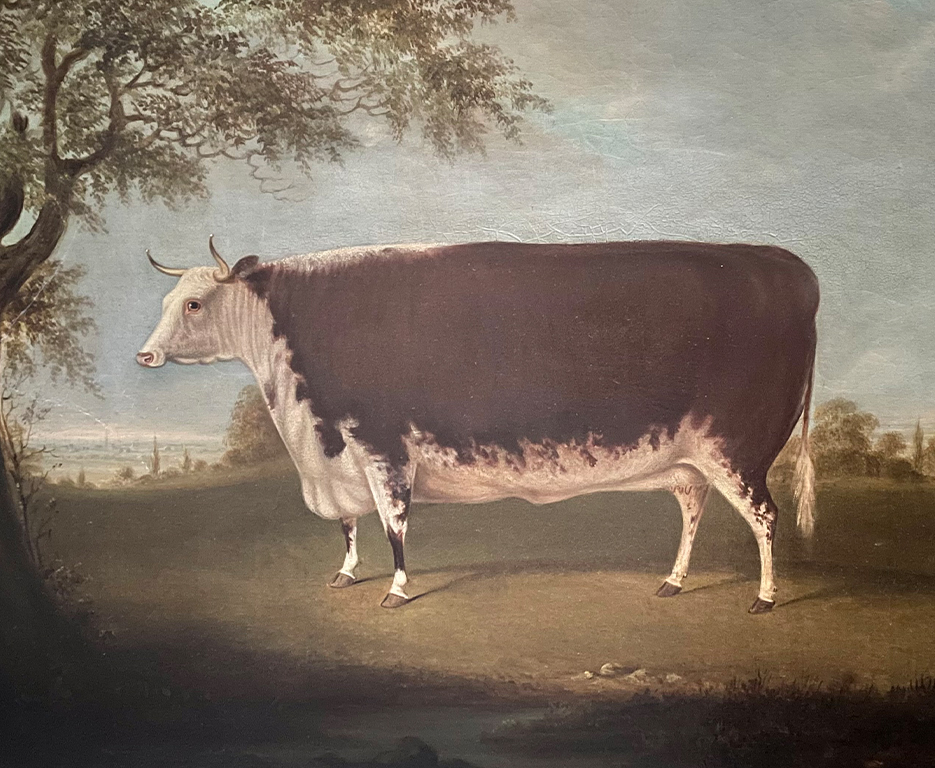
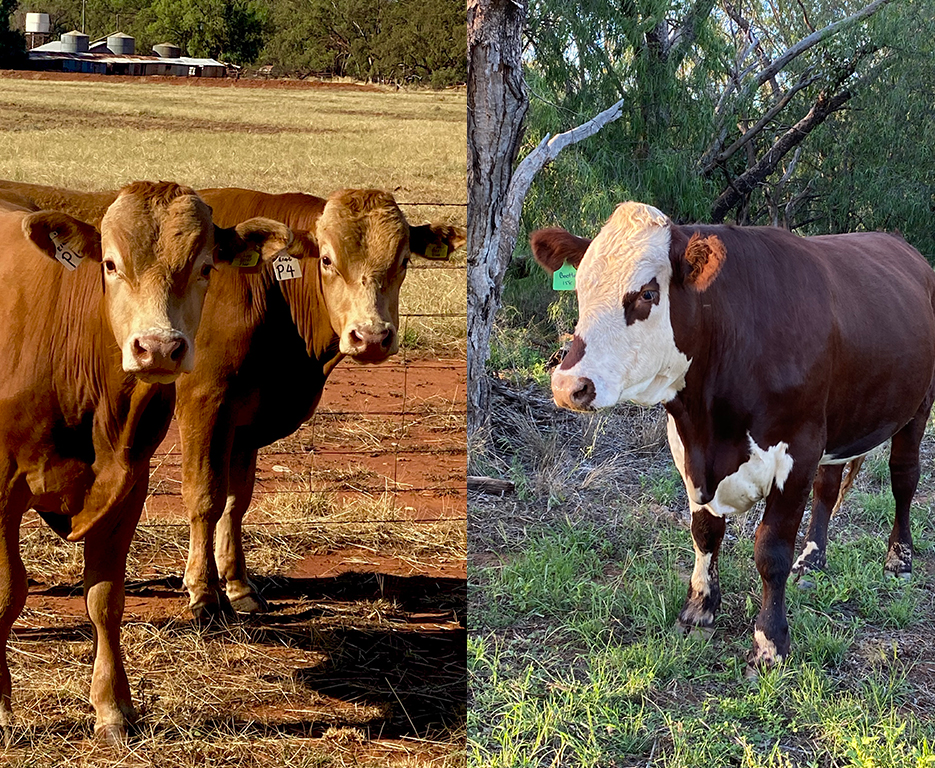
Bogan Red – the best of two breeds.
The double bonus of improved taste and marbling was a great start, but the thing that really sold us on the Poll Hereford/Red Wagyu cross was the ability to obtain a 3-5 marble score off grass only and within just 24 months!
No cages. No forced feeding. Just happy, healthy animals RangeFree grazing in Bogan Farms native pastures.
In October 2020 we obtained the best genetics from the US, 100 straws of a Purebred Poll Akaushi Bull bred by Heartbrand called Yellowstone 0917F to inseminate our hundred largest hand-fed drought Poll Hereford heifers. The next run of heifers were then depastured with 2 young Nashua fullblood bulls descended from The Wright Wagu Master Chef E146. We loved the Akaushis so much we decided to run an Akaushi stud alongside our Poll Hereford stud so purchased 10 cows and calves from Binnie Beef in December 2020.
In July 2021 we will have over 250 heifers giving birth to our first Poll Hereford/Red Wagyu babies.
The name we’re giving to the Poll Hereford/Red Wagyu cross?
Bogan Red*™ pending
We’ll maintain both the Poll Hereford and Akaushi studs for genetics. We’re not trying to create a new ‘Breed’ as we will be relying on the hybrid vigor of the F1 cross to turn off our young cattle earlier and in better condition.
Stay updated with the progress of our Bogan Red.
Bogan Red means quality – tender and tasty with less cholesterol.
Red Wagyu brings to our Bogan Red cattle the demonstrated benefits of a higher proportion of oleic fatty acid, conjugated linoleic acid and monounsaturated fat (Hawkes, 2013; Gotoh et al., 2014; American Akaushi Association, 2014).
The Akaushi unique characteristics are not found in any other red meat animals and are shown to be more beneficial to human health (Gazdziak, 2014; Gilmore, et al., 2013). These fatty acid features have been shown to be healthier for the human diet by reducing low density lipoprotein, which can pose problems to heart health (Gilmore et al., 2013). A greater amount of more beneficial fat to the human body is seen when the proportion of low density lipoprotein (LDL) is reduced, without reducing the number of high density lipoprotein (HDL) (Gilmore, et al., 2013). More importantly, Red Wagyu is not just good for you, it tastes better. The higher concentration of monounsatured fat in Akaushi beef results in a much richer, buttery flavour that is tender and juicy throughout.

Get in touch.
Want to stay up to date with the latest news about our farms or Bogan Red? Or do you want to work with us on our busy farming journey? We’d love to hear from you.
